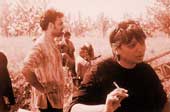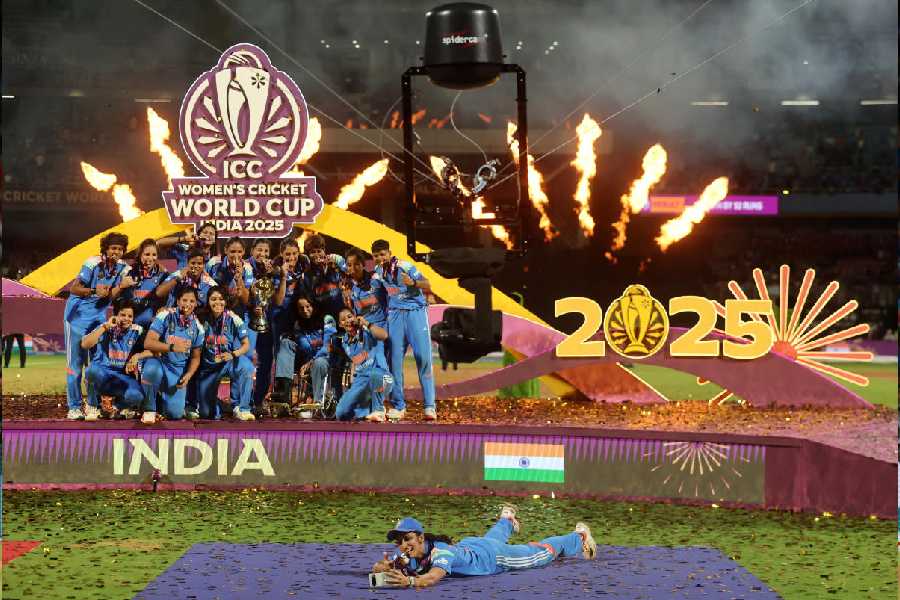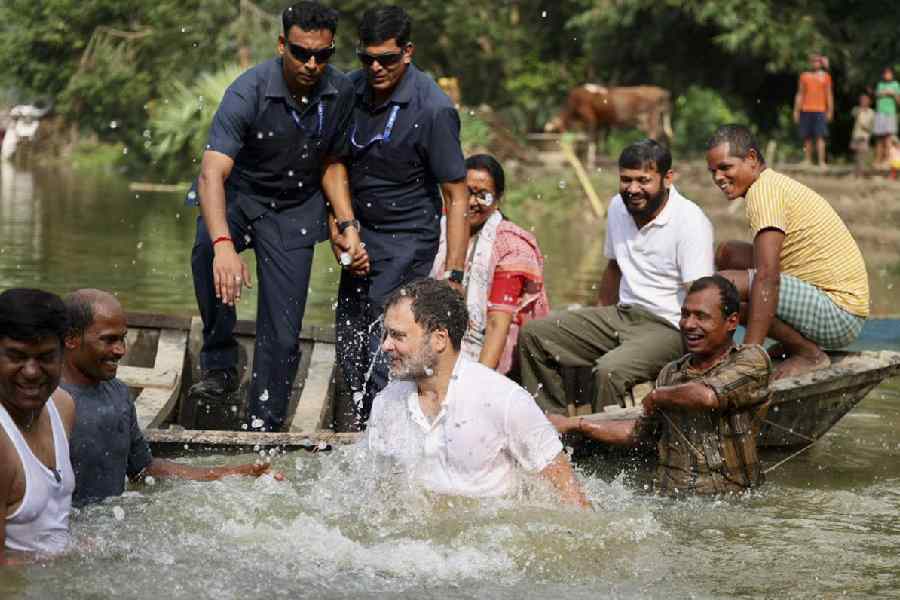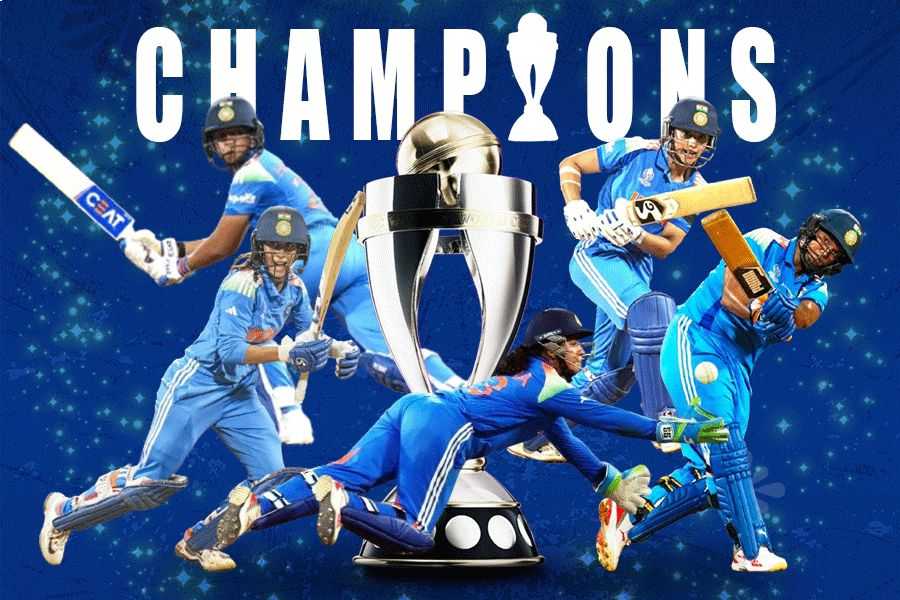 |
| MAN AS SUPERMAN: Bela Segal on the sets of the music video. Babbu Maan is in the background |
The winter sun is setting over ripe yellow paddy fields in a tiny village off Chandigarh. “We have to catch the light,” director Bela Segal screams to her unit, scattered around a mud hut with a thatched roof, sipping local-made, roadside, kadak chai, and chatting. There are protests and grumbles — “Come on, Bela, let us at least finish our chai break, yaar” — but Segal is not to be moved. “We need the light!” she shouts again. “It’s going to make him look romantic. He has to look very sexy in this scene.”
Of course, Punjabi pop singer, Babbu (pronounced Bab’bu) Maan is sexy. At least by conventional standards. He fits the description of the quintessential tall, dark and handsome romantic hero, to the tee. Ask any woman — or man for that matter — in the unit and they’ll swear by it.
“Yes, he’s got the looks,” Segal giggles girlishly. “And I’m going to make the most of it,” adds the 40-something Film and Television Institute of Pune graduate, who also happens to be Sanjay Leela Bhansali’s elder sister and editor of most of his films.
That was on a cold November evening last year. A little over two months later, shooting has been completed, editing done, sound mixed and the music video just released. You can catch it on MTV, Channel V, Etc TV, or Punjabi TV, among others, where it’s being aired at regular intervals.
And going by the video, Segal has stuck to her words. Popular Bengali wisdom has it that if you want to arrange your daughter’s marriage, let the intended groom see her in the light of the setting sun (godhuli logon — literally the time when cows go home, raising a cloud of golden dust in their path). She will look so beautiful, the saying goes, he won’t be able to say no.
To make the most of his beauty, Segal introduces Babbu Maan in a cloud of soft golden light. Yes, Bela Segal likes to make men look good. And this is because, she admits unabashedly, “I like looking at men who look good.” In fact, she adds, laughing, after a brief pause, “I like looking at men, full stop.”
For Segal it’s as simple as that. No, she is not deliberately or consciously trying to subvert traditions of male domination in Mumbai’s music video industry by wreaking revenge and objectifying the male for a change. She is no firebrand feminist filmmaker with earth-shattering theories about the bane of male-gaze in cinema.
But Segal does admit that she shows men “in the way we women want to see them” and having had directed a number of hit music videos — including Adnan Sami’s Tere Chehra series — she has inadvertently brought about a shift in the camera gaze from male to female. “But that does not mean I show brainless beefcakes,” she says emphatically. “Though I am not denying that some women do like to see hunks, just like some men like to see bimbos, it’s the non-macho, sensitive male which I portray in my videos.”
She points out that in the Tere Chehra series Adnan, who is fat and does not fit the description of the conventional romantic hero has been given a romantic image by casting him opposite Rani Mukherjee, a reigning queen of popular Bombay films. Of course, what carries him through is his music, which fuses Eastern classical and Western pop and what Segal says is “his angelic expression” and dimpled smile. “Women like that,” she smiles. In that sense, says Segal, her brand of male-objectification, “if it at all can be called that, is harmless”.
It’s not just the superficial or physical beauty, which is on display. Male objectification here implies projecting on screen the ideal of man, from the perspective of the opposite sex. In her music videos Segal shows what a woman looks for in a man. “A woman expects her man to be sensitive, warm and understanding. She likes him to have broad shoulders not just because she finds it physically appealing, but because it indicates he is protective, that he has the ability to offer warmth and comfort when she needs it.” This may not be every woman’s ideal of a man, she points out, just like scantily-clad dolls are not necessarily every man’s dream, but they cater to the stereotype of the ideal man.
It’s not surprising then that in many of Bela’s music videos tears in a man’s eyes are not that unusual. In the Babbu Maan video the camera pans slowly deliberately over the male singer’s face, streaked with tears. In one shot he is stretched out on a chatai on the floor, weeping, a dimly-lit lantern casting shadows across his face. He pines for his lover (who may be gone forever, either dead or married to someone else — that is not explained). “Aaj meinu phir teri yadd aiee hai (Once again, today I am thinking of you),” he sings softly, melodiously in Punjabi, his voice deep and husky.
And the gaze is definitely female because it’s not her that you see, but him. She appears only in a few shots, in flashbacks of memory. And no, there are no shots that zoom in, as Segal says, “for no rhyme or reason” on fragmented, exposed body parts — whether a bejewelled midriff or a bearded chin.
It was British feminist film critic, Laura Mulvey who, in the year 1972, first analysed the notion of ‘male-gaze’ in cinema. Citing mainstream Hollywood films as example, she showed how camera movement always — or at least, more often that not — reflected a male perspective. She argued that since men made movies, women were always presented as objects of male desire and their only role was to give male audiences viewing pleasure. She showed how the camera captured fragmented body parts — a bare arm here, a depilated leg there — of a female object for the titillation of the male viewer.
Everyone knows that mainstream Bombay films are notorious for the male-gaze factor. From pointed, padded bras to strategically positioned camera angles, it’s literally in your face. And the music video industry is no exception, with its bevy of scantily-clad pretty young things.
And it’s not just the videos of male singers which use women to represent love or lust interest.
Videos of female singers too use women’s bodies (sometimes the singer’s own) as an object of titillation. Consider such recent hits as the controversial video of the Kaanta Laaga song, a remix of a 1960s Asha Bhosle hit. During the greater part of this, the actress, Shefali Zariwala, wearing little more than a thong over low-rise jeans thrusts her bare midriff and pelvis at the unfortunate camera. Also, the sole purpose of Yana Gupta gyrating to the tunes of Babuji Zara Dhirey Chalo seems also to be to sexually excite the male viewer.
Interestingly, the Kaanta Laaga video was directed by a woman. This in itself shows that often women, who work within the confines of mainstream, also emulate existing languages and idioms of mainstream filmmaking. They don’t necessarily bother to break patriarchal traditions by virtue of belonging to a different gender, unless they do so deliberately and overtly.
Segal too adheres by and large to mainstream norms. Her male characters are still strong and protective. Her women characters are still often demure and diffident, who dress up in their finery to attract the attention of their lovers. Also, she doesn’t deviate too much from mainstream themes of love and loss, for instance. Like Maan’s song, the theme of Adnan Sami’s Tere Chehra series is also a lost romantic love. Here too the gaze is female as the camera captures the pain and pathos of a lovelorn Adnan.
Perhaps the only conscious thing Bela Segal does to bring about a change in the treatment of men and women is to deliberately steer clear of what she calls “the disrespecting or demeaning women by reducing them to mere bodies”. She admits that there is a thin line between lewd exposure for the sake of male titillation and exposure because it’s a woman’s right to have it. “A woman can say it’s her right to expose for titillation also,” says Segal, “and you can’t argue with that”.
But in so much as a male gaze is about what gives males viewing pleasure and female gaze about what gives females viewing pleasure, Segal believes her videos are definitely for both, but tilted in favour of women. “I put all my passionate feelings about men into these videos,” she says, “and the camera tries to capture it”.
And she infuses this passion with whatever romance she can find in the surroundings… like the golden light of a sunset. And a man gazing into a romantic sunset is the stuff female gaze is made of.










